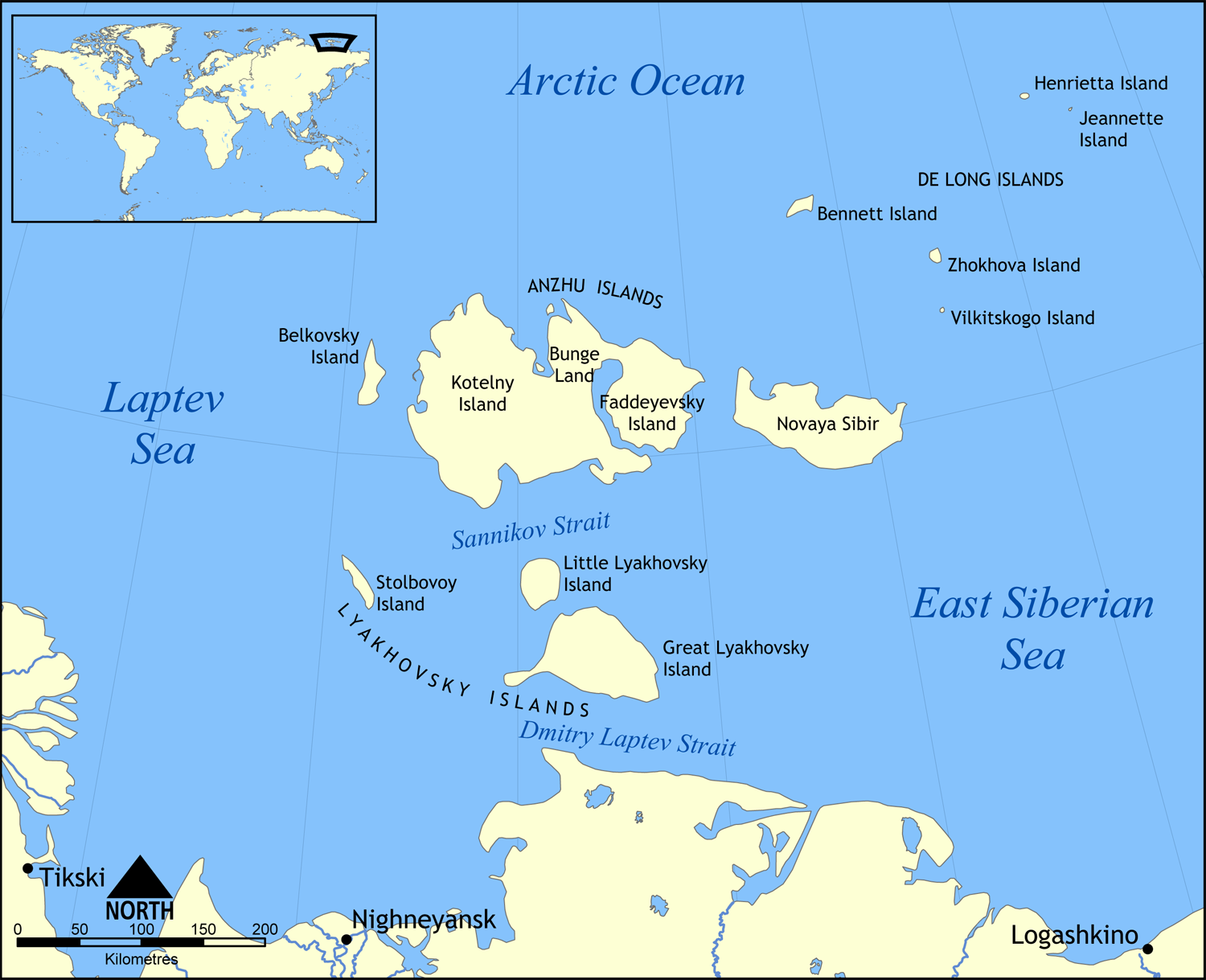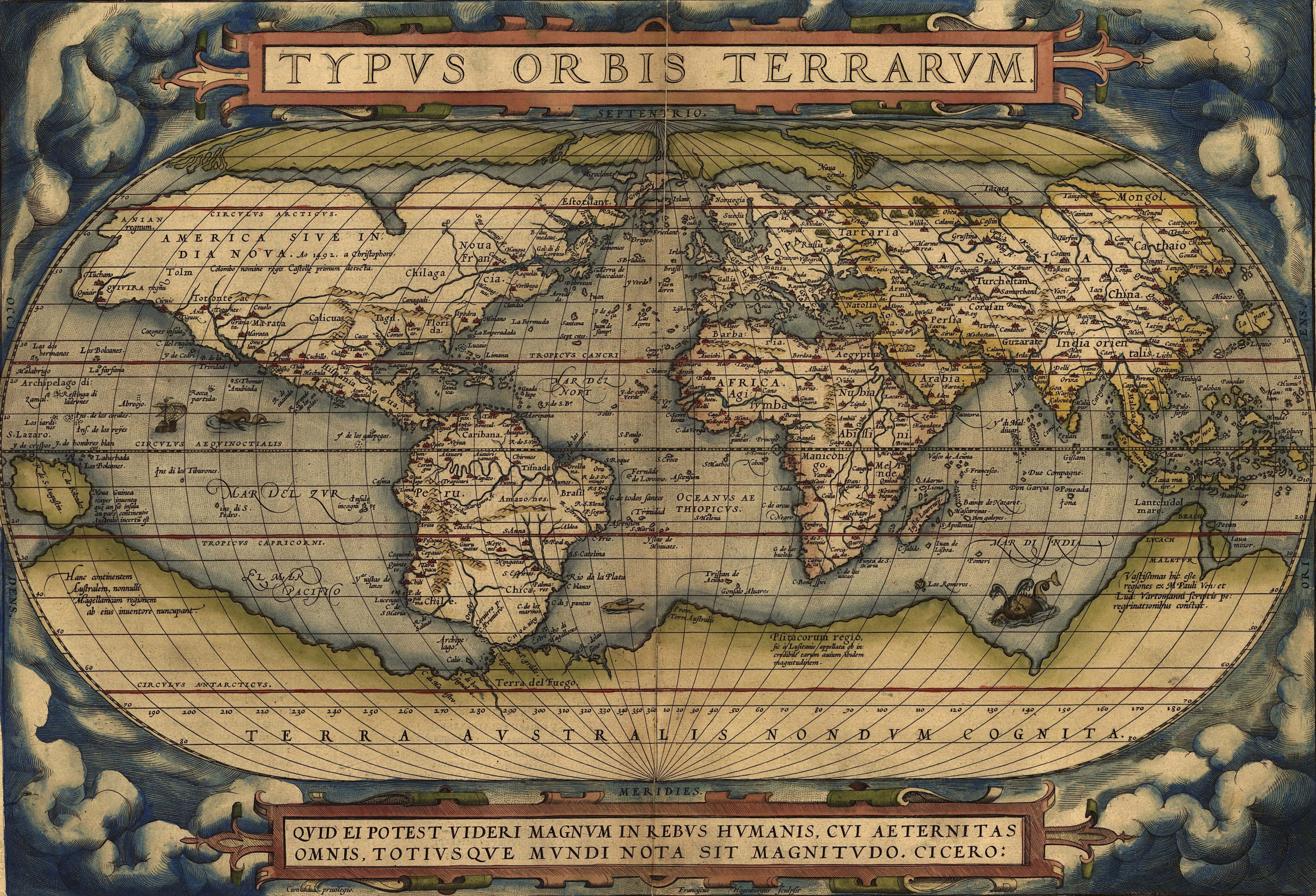|
Yakov Sannikov
Yakov Sannikov () (January 29, 1780, Ust-Yansk – 1810s, Sakha Republic) was a Russian merchant and explorer of the New Siberian Islands. In 1800, Sannikov discovered and charted Stolbovoy Island, and in 1805 Faddeyevsky Island. In 1809–1810, he took part in the expedition led by Matvei Gedenschtrom. In 1810, Sannikov crossed the island of New Siberia and a year later explored Faddeyevsky Island. He also discovered Bunge Land, and suggested that there was a vast land north of the Kotelny Island. This hypothetical island has become known as Sannikov Land Sannikov Land (russian: Земля Санникова) was a phantom island in the Arctic Ocean. Its supposed existence became something of a myth in 19th-century Russia. History Yakov Sannikov and Matvei Gedenschtrom claimed to have seen the .... Sannikov died in the 1810s, most likely in 1812. A strait between Maly Lyakhovsky and the Kotelny islands bears Sannikov's name. References 1780 births 1810s deaths ... [...More Info...] [...Related Items...] OR: [Wikipedia] [Google] [Baidu] |
Ust-Yansk
Ust-Yansk (russian: Усть-Янск; sah, Усуйаана, ''Usuyaana'') is a rural locality (a '' selo''), the only inhabited locality, and the administrative center of Ust-Yansky Rural Okrug of Ust-Yansky District in the Sakha Republic, Russia, located from Deputatsky, the administrative center of the district.''Registry of the Administrative-Territorial Divisions of the Sakha Republic'' Its population as of the 2010 Census was 317,Sakha Republic Territorial Branch of the Federal State Statistics Service The Federal State Statistics Service (russian: Федеральная служба государственной статистики (Росстат), ''Federal'naya sluzhba gosudarstvennoi statistiki (Rosstat)'') is the governmental statistics .... Results of the 2010 All-Russian CensusЧисленность населения по районам, городским и сельским населённым пунктам(''Population Counts by Districts, Urban and ... [...More Info...] [...Related Items...] OR: [Wikipedia] [Google] [Baidu] |
Maly Lyakhovsky
Maly Lyakhovsky Island (russian: Малый Ляховский) is the second largest of the Lyakhovsky Islands belonging to the New Siberian Islands archipelago in Laptev Sea in northern Russia. It has an area of . The Lyakhovsky Islands are named in honour of Ivan Lyakhov, who explored them in 1773. Geology Maly Lyakhovsky Island consists of Upper Jurassic to lower Cretaceous turbidites, also known as '' flysch'', covered by a thin veneer of Pliocene to Pleistocene sediments. These Mesozoic rocks consist of sandstones, argillites, and shales deformed into east-northeast striking folds about wide. The Mesozoic rocks are covered by a relatively thin layer of Pliocene to Pleistocene sandy and clayey sediments of colluvial and alluvial origin. Near the coast, the alluvial sediments grade into nearshore marine sediments containing fossil marine mollusks and lignitized wood. Thick permafrost characterized by massive ice wedges has developed in these sediments.Fujita, K., and ... [...More Info...] [...Related Items...] OR: [Wikipedia] [Google] [Baidu] |
Explorers Of Asia
Exploration refers to the historical practice of discovering remote lands. It is studied by geographers and historians. Two major eras of exploration occurred in human history: one of convergence, and one of divergence. The first, covering most of ''Homo sapiens'' history, saw humans moving out of Africa, settling in new lands, and developing distinct cultures in relative isolation. Early explorers settled in Europe and Asia; 14,000 years ago, some crossed the Ice Age land bridge from Siberia to Alaska, and moved southbound to settle in the Americas. For the most part, these cultures were ignorant of each other's existence. The second period of exploration, occurring over the last 10,000 years, saw increased cross-cultural exchange through trade and exploration, and marked a new era of cultural intermingling, and more recently, convergence. Early writings about exploration date back to the 4th millennium B.C. in ancient Egypt. One of the earliest and most impactful thinkers of ... [...More Info...] [...Related Items...] OR: [Wikipedia] [Google] [Baidu] |
Russian And Soviet Polar Explorers
Russian(s) refers to anything related to Russia, including: *Russians (, ''russkiye''), an ethnic group of the East Slavic peoples, primarily living in Russia and neighboring countries *Rossiyane (), Russian language term for all citizens and people of Russia, regardless of ethnicity *Russophone, Russian-speaking person (, ''russkogovoryashchy'', ''russkoyazychny'') * Russian language, the most widely spoken of the Slavic languages *Russian alphabet * Russian cuisine *Russian culture *Russian studies Russian may also refer to: * Russian dressing *''The Russians'', a book by Hedrick Smith * Russian (comics), fictional Marvel Comics supervillain from ''The Punisher'' series * Russian (solitaire), a card game * "Russians" (song), from the album ''The Dream of the Blue Turtles'' by Sting *"Russian", from the album ''Tubular Bells 2003'' by Mike Oldfield *"Russian", from the album '' '' by Caravan Palace *Nik Russian, the perpetrator of a con committed in 2002 *The South African name ... [...More Info...] [...Related Items...] OR: [Wikipedia] [Google] [Baidu] |
People From Ust-Yansky District
A person ( : people) is a being that has certain capacities or attributes such as reason, morality, consciousness or self-consciousness, and being a part of a culturally established form of social relations such as kinship, ownership of property, or legal responsibility. The defining features of personhood and, consequently, what makes a person count as a person, differ widely among cultures and contexts. In addition to the question of personhood, of what makes a being count as a person to begin with, there are further questions about personal identity and self: both about what makes any particular person that particular person instead of another, and about what makes a person at one time the same person as they were or will be at another time despite any intervening changes. The plural form "people" is often used to refer to an entire nation or ethnic group (as in "a people"), and this was the original meaning of the word; it subsequently acquired its use as a plural form of ... [...More Info...] [...Related Items...] OR: [Wikipedia] [Google] [Baidu] |
Year Of Death Uncertain
A year or annus is the orbital period of a planetary body, for example, the Earth, moving in its orbit around the Sun. Due to the Earth's axial tilt, the course of a year sees the passing of the seasons, marked by change in weather, the hours of daylight, and, consequently, vegetation and soil fertility. In temperate and subpolar regions around the planet, four seasons are generally recognized: spring, summer, autumn and winter. In tropical and subtropical regions, several geographical sectors do not present defined seasons; but in the seasonal tropics, the annual wet and dry seasons are recognized and tracked. A calendar year is an approximation of the number of days of the Earth's orbital period, as counted in a given calendar. The Gregorian calendar, or modern calendar, presents its calendar year to be either a common year of 365 days or a leap year of 366 days, as do the Julian calendars. For the Gregorian calendar, the average length of the calendar year (the m ... [...More Info...] [...Related Items...] OR: [Wikipedia] [Google] [Baidu] |
1810s Deaths
Year 181 ( CLXXXI) was a common year starting on Sunday (link will display the full calendar) of the Julian calendar. At the time, it was known as the Year of the Consulship of Aurelius and Burrus (or, less frequently, year 934 ''Ab urbe condita''). The denomination 181 for this year has been used since the early medieval period, when the Anno Domini calendar era became the prevalent method in Europe for naming years. Events By place Roman Empire * Imperator Lucius Aurelius Commodus and Lucius Antistius Burrus become Roman Consuls. * The Antonine Wall is overrun by the Picts in Britannia (approximate date). Oceania * The volcano associated with Lake Taupō in New Zealand erupts, one of the largest on Earth in the last 5,000 years. The effects of this eruption are seen as far away as Rome and China. Births * April 2 – Xian of Han, Chinese emperor (d. 234) * Zhuge Liang, Chinese chancellor and regent (d. 234) Deaths * Aelius Aristides, Greek orator and wr ... [...More Info...] [...Related Items...] OR: [Wikipedia] [Google] [Baidu] |
1780 Births
Year 178 ( CLXXVIII) was a common year starting on Wednesday (link will display the full calendar) of the Julian calendar. At the time, it was known as the Year of the Consulship of Scipio and Rufus (or, less frequently, year 931 ''Ab urbe condita''). The denomination 178 for this year has been used since the early medieval period, when the Anno Domini calendar era became the prevalent method in Europe for naming years. Events By place Roman Empire * Bruttia Crispina marries Commodus, and receives the title of '' Augusta''. * Emperor Marcus Aurelius and his son Commodus arrive at Carnuntum in Pannonia, and travel to the Danube to fight against the Marcomanni. Asia * Last (7th) year of ''Xiping'' era and start of ''Guanghe'' era of the Chinese Han Dynasty. * In India, the decline of the Kushan Empire begins. The Sassanides take over Central Asia. Religion * The Montanist heresy is condemned for the first time. Births * Lü Meng, Chinese general (d. 220) * ... [...More Info...] [...Related Items...] OR: [Wikipedia] [Google] [Baidu] |
Sannikov Strait
Sannikov Strait (пролив Санникова; proliv Sannikova) is a 50 km-wide strait in Russia. It separates Anzhu Islands from Lyakhovsky Islands, and connects the Laptev Sea in the west with the East Siberian Sea The East Siberian Sea ( rus, Восто́чно-Сиби́рское мо́ре, r=Vostochno-Sibirskoye more) is a marginal sea in the Arctic Ocean. It is located between the Arctic Cape to the north, the coast of Siberia to the south, the New S ... in the east. It is named after Russian explorer Yakov Sannikov. References * Location* Geographical names Straits of Russia Bodies of water of the Sakha Republic Straits of the Laptev Sea Straits of the East Siberian Sea New Siberian Islands {{SakhaRepublic-geo-stub ... [...More Info...] [...Related Items...] OR: [Wikipedia] [Google] [Baidu] |
New Siberian Islands
The New Siberian Islands ( rus, Новосиби́рские Oстрова, r=Novosibirskiye Ostrova; sah, Саҥа Сибиир Aрыылара, translit=Saña Sibiir Arıılara) are an archipelago in the Extreme North of Russia, to the north of the East Siberian coast between the Laptev Sea and the East Siberian Sea north of the Sakha (Yakutia) Republic. History The first news about the existence of the New Siberian Islands was brought by a Cossack, Yakov Permyakov, in the beginning of the 18th century. In 1712, a Cossack unit led by M. Vagin reached the Great Lyakhovsky Island. In 1809–10 Yakov Sannikov and Matvei Gedenschtrom went to the New Siberian Islands on a cartographic expedition. Sannikov reported the sighting of a "new land" north of Kotelny in 1811. This became the myth of ''Zemlya Sannikova'' or ''Sannikov Land''.Markham, Albert Hastings ''Arctic Exploration'', 1895 In 1886, Russian polar explorer and scientist Eduard Toll, during his first visit to the New S ... [...More Info...] [...Related Items...] OR: [Wikipedia] [Google] [Baidu] |
Sannikov Land
Sannikov Land (russian: Земля Санникова) was a phantom island in the Arctic Ocean. Its supposed existence became something of a myth in 19th-century Russia. History Yakov Sannikov and Matvei Gedenschtrom claimed to have seen the land mass during their 1809–1810 cartographic expedition to the New Siberian Islands. Sannikov was the first one to report the sighting of a "new land" north of Kotelny Island in 1811 (hence the name ''Sannikov Land'').Mills, W. J., 2003, ''Exploring polar frontiers: a historical encyclopedia.'' ABC CLIO Publishers, Oxford, United Kingdom. In 1886, the Baltic German explorer in Russian service, Baron Eduard von Toll, reported observing the elusive land during an expedition to the New Siberian Islands. In August 1901, during the Russian Polar Expedition, also led by Toll, the Russian Arctic ship ''Zarya'' headed across the Laptev Sea, searching for the legendary Sannikov Land. It was soon blocked by floating pack ice in the New Siberian ... [...More Info...] [...Related Items...] OR: [Wikipedia] [Google] [Baidu] |


_1938.jpg)

